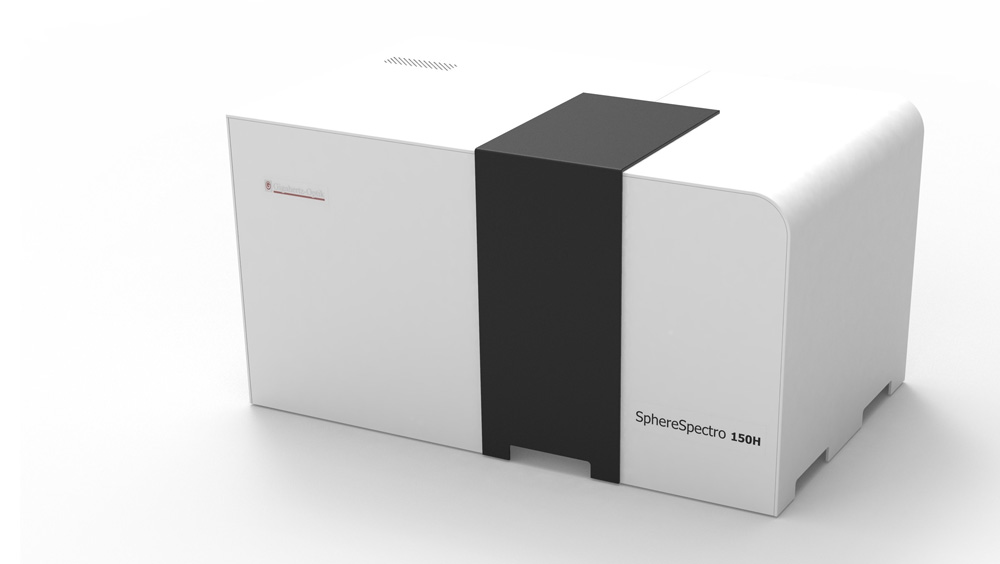
UV/VIS/NIR Spectrophotometer for clear, turbid or diffuse Samples
UV/VIS/NIR spectroscopy is an established measurement technique for decades with many applications.
Measurement of clear samples:
The most common case is the measurement of clear samples, glasses, etc. Here mostly absorption, reflection and transmission are measured (DIN 5036-3 as well as CIE-130-1998, Transmission in 8°/d Geometry for all Samples). Especially the spectral absorption coefficient µa which can be determined for clear samples according to the Lambert Beer law is an important physical quantity for further analysis because it allows statements about the composition of the sample.
Challenge of measuring diffuse, turbid and scattering samples:
The measurement or investigation of scattering/diffus/turbid samples is a greater challenge, since a large number of effects such as scattering in the material, absorption and remission have to be taken into account. Physically, this means that in addition to the spectral absorption coefficient µa, the spectral effective scattering coefficient µs' must also be determined. If this measurement is successful, it is for instance possible to analyze diffusely scattering pharmaceutical tablets. Others are milk, cooling lubricants, foodstuffs such as cheese, etc. For scattering samples, the effective scattering coefficient µs' (also called reduced scattering coefficient) provides further analysis possibilities.

For this purpose we offer the SphereSpectro 150H, a unique spectrophotometer system for simultaneous discrimination and quantification of the spectral absorption coefficient as well as the spectral effective scattering coefficient of scattering media. Classical measurements in 8°/d are also possible, i.e. the measurement system can be used to extend the measurable space from the old to the new.
Applications are for example
- Material analysis
- Biophotonics
- Content determination
- Quality assurance
- Chemometrics
- Food Analysis
- Pharmacy and Cosmetics
- Rendering based on physical parameters
What exactly are scattering media/samples?
Scattering media are materials into which light can penetrate, but then spreads in different directions due to scattering centers at which it can change direction of propagation (scattering). These scattering centers are areas in the medium that have a different refractive index from the base medium (matrix) e.g. if there is a particle at this point. In scattering media, light can therefore again emerge from the side on which light was originally irradiated, the so-called diffuse reflectance. In addition, the light can be reflected at the boundary layer of the medium in the form of a (directional) reflection. Both effects together are called total reflection. In the case of samples whose expansion is small compared to the light propagation??, light can also escape on all lateral sides. Total transmission refers to the proportion of light that passes through a sample and consists of two components, collimated transmission and diffuse transmission. The collimated transmission is the proportion of the light that passes directly through the sample without any interaction, i.e. has not been scattered or absorbed. The diffuse transmission in turn is the proportion of light that is transmitted after interaction, i.e. after scattering within the medium.

Learn more about the SphereSpectro 150H: